
Causes of Blue Discoloration in Succulent Leaves
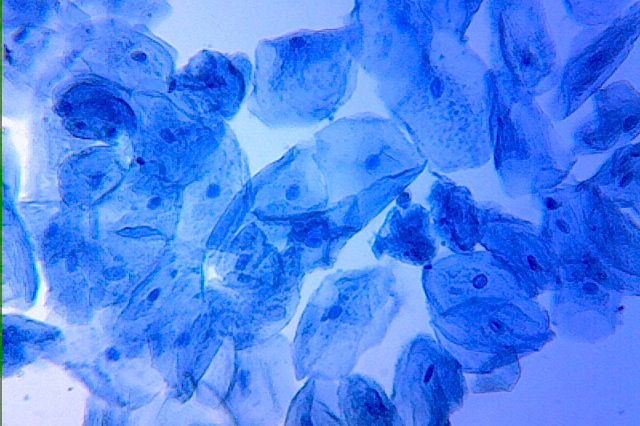
Succulents are a type of plant known for their thick, fleshy leaves and ability to store water. They have gained popularity among indoor and outdoor gardeners due to their low maintenance needs and unique appearance. However, one issue that can arise with succulents is the development of blue discoloration on their leaves. This phenomenon is not only aesthetically displeasing but also indicates an underlying problem that needs to be addressed.
We will explore the causes of blue discoloration in succulent leaves and discuss how to prevent and treat this issue. We will delve into the various factors that can contribute to the blue coloration, such as nutrient deficiencies, fungal infections, and environmental conditions. Additionally, we will provide practical tips and solutions to help succulent enthusiasts maintain the health and vibrancy of their plants. Whether you are a beginner succulent gardener or a seasoned enthusiast, understanding the causes of blue discoloration is crucial for the overall well-being of your succulents.
- Overwatering can cause blue discoloration in succulent leaves
- Insufficient sunlight can lead to blue discoloration in succulent leaves
- Nutrient deficiencies, such as lack of magnesium, can result in blue discoloration in succulent leaves
- Pests or diseases can cause blue discoloration in succulent leaves
- Cold temperatures can lead to blue discoloration in succulent leaves
- Genetic factors can play a role in blue discoloration of succulent leaves
- Blue discoloration in succulent leaves may be caused by overwatering, which can lead to root rot and affect the plant's ability to absorb nutrients properly
- Insufficient sunlight can result in blue discoloration in succulent leaves as they require adequate light for proper photosynthesis and pigmentation
- Nutrient deficiencies, particularly magnesium deficiency, can manifest as blue discoloration in succulent leaves due to the plant's inability to produce chlorophyll effectively
- Pests or diseases such as mealybugs or fungal infections can cause blue discoloration in succulent leaves as they damage the cells and disrupt normal pigmentation
- Cold temperatures can lead to blue discoloration in succulent leaves as it can cause stress and affect the plant's metabolic processes
- Genetic factors can also contribute to blue discoloration in succulent leaves, as some succulent species naturally exhibit blue pigmentation in their leaves
- Frequently Asked Questions
Overwatering can cause blue discoloration in succulent leaves
One of the most common causes of blue discoloration in succulent leaves is overwatering. Succulents are known for their ability to store water in their leaves, stems, and roots, allowing them to survive in arid conditions. However, when succulents are overwatered, their cells become overly saturated with water, leading to a condition known as hydric stress.
Hydric stress occurs when the water content within a succulent's cells exceeds its capacity, causing the cells to rupture or become damaged. This can result in various visual symptoms, including blue or purple discoloration of the leaves.
When succulents are overwatered, their roots are unable to take up oxygen properly. This lack of oxygen leads to the production of anthocyanin pigments, which are responsible for the blue or purple hues observed in the leaves. Additionally, overwatering can disrupt the balance of nutrients within the plant, further contributing to the development of blue discoloration.
Signs of overwatering in succulents
It's important for succulent enthusiasts to be able to recognize the signs of overwatering to prevent blue discoloration and other related issues. Some common signs of overwatering in succulents include:
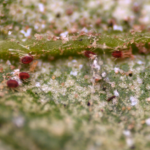 Eliminating White Webs on Succulents: A Comprehensive Guide
Eliminating White Webs on Succulents: A Comprehensive Guide- Soft and mushy leaves
- Yellowing or wilting of leaves
- Root rot or blackened roots
- Foul odor emanating from the soil
- Excessive leaf drop
If you notice any of these signs in your succulent, it's crucial to adjust your watering routine immediately to prevent further damage.
Preventing blue discoloration caused by overwatering
To prevent blue discoloration and the detrimental effects of overwatering, it's essential to establish a proper watering routine for your succulents. Here are some tips to help you avoid overwatering:
- Water your succulents only when the soil is completely dry. Stick your finger into the soil to check for moisture.
- Ensure that your succulents are planted in well-draining soil. Adding perlite or sand to the soil mixture can improve drainage.
- Use pots with drainage holes to allow excess water to escape.
- Avoid misting succulents or using spray bottles to water them, as this can lead to overwatering.
- Monitor the weather conditions and adjust your watering schedule accordingly. Succulents may need less water during cooler seasons.
By following these preventive measures and adjusting your care routine, you can help your succulents thrive and maintain their vibrant, natural colors.
Insufficient sunlight can lead to blue discoloration in succulent leaves
One of the primary causes of blue discoloration in succulent leaves is insufficient sunlight. Succulents, like many other plants, rely on sunlight for photosynthesis, the process through which they produce energy. When succulents do not receive adequate sunlight, their leaves may undergo a color change, turning blue or purple.
This phenomenon occurs because of a pigment called anthocyanin. Anthocyanin is responsible for the blue and purple hues seen in many plants, including succulents. When succulents are exposed to low light conditions, they produce more anthocyanin as a protective mechanism. The increased production of anthocyanin leads to the blue discoloration of the leaves.
It is important to note that not all succulents will exhibit blue discoloration in response to low light. Some succulents may turn a different color or show signs of etiolation, which is the elongation and weakening of the plant due to insufficient light.
To prevent blue discoloration in succulent leaves, it is crucial to provide them with sufficient sunlight. Place your succulents in a location where they can receive at least six hours of direct sunlight each day. If natural sunlight is not available, you can use artificial grow lights specifically designed for plants.
 White-Dotted Succulents: Potential Poisonous Effects on Pets
White-Dotted Succulents: Potential Poisonous Effects on PetsNutrient deficiencies, such as lack of magnesium, can result in blue discoloration in succulent leaves
One of the common causes of blue discoloration in succulent leaves is nutrient deficiencies, especially a lack of magnesium. Magnesium is an essential micronutrient needed for various physiological processes in plants, including photosynthesis, enzyme activation, and protein synthesis.
When succulents do not receive an adequate supply of magnesium, they may exhibit symptoms such as blue or purple discoloration in their leaves. This discoloration is often more prominent in the older leaves, while the new growth may appear unaffected.
It is important to note that the blue discoloration is not a natural characteristic of succulents and indicates an underlying issue with their nutrient uptake or availability. Therefore, it is crucial to address magnesium deficiencies promptly to ensure the health and vitality of your succulents.
Causes of magnesium deficiencies in succulents
There are several reasons why succulents may suffer from magnesium deficiencies. Understanding these causes can help prevent and address the issue effectively:
- Unbalanced soil pH: Succulents prefer slightly acidic to neutral soil pH levels. If the soil becomes too acidic or alkaline, it can hinder the uptake of magnesium and other essential nutrients.
- Overfertilization: Excessive use of fertilizers high in potassium or phosphorus can disrupt the balance of nutrients in the soil, leading to magnesium deficiencies.
- Poor soil quality: Succulents thrive in well-draining soil that provides adequate nutrition. If the soil lacks organic matter or is compacted, it may not retain enough magnesium for the plants.
- Watering practices: Overwatering can cause magnesium to leach out of the soil, making it less available to the succulents. Additionally, succulents grown in containers without proper drainage can experience waterlogged soil, further impeding magnesium absorption.
Addressing and preventing magnesium deficiencies
If you notice blue discoloration in your succulent leaves, it is essential to take appropriate measures to address and prevent magnesium deficiencies:
- Soil testing: Conduct a soil test to determine the pH level and nutrient content of the soil. This will help identify any imbalances and guide you in adjusting the conditions accordingly.
- Correcting soil pH: If the soil pH is too acidic or alkaline, amend it by adding organic matter or using pH-adjusting products specifically designed for succulents.
- Proper fertilization: Use a balanced fertilizer specifically formulated for succulents. Avoid overfertilization and follow the recommended dosage to maintain a healthy nutrient balance.
- Improving soil quality: Ensure your succulents are planted in well-draining soil enriched with organic matter. Consider adding compost or perlite to improve drainage and nutrient retention.
- Optimal watering: Water your succulents sparingly, allowing the soil to dry out between waterings. Use containers with drainage holes to prevent waterlogging and promote healthy root growth.
By addressing magnesium deficiencies and providing optimal growing conditions, you can help your succulents regain their vibrant green color and overall health.
Pests or diseases can cause blue discoloration in succulent leaves
 Identifying and Treating Root Rot in Succulents: Signs and Options
Identifying and Treating Root Rot in Succulents: Signs and OptionsWhen you notice a blue discoloration in the leaves of your succulents, it can be quite alarming. The vibrant hues of green are a trademark of healthy succulents, so any deviation from this can be a cause for concern. One of the possible causes of this blue discoloration is pests or diseases.
Pests
Pests such as aphids, mealybugs, and scale insects can infest succulent plants and cause damage to their leaves. These tiny invaders feed on the sap of the plant, often leaving behind a sticky residue known as honeydew. This honeydew can attract ants and provide a breeding ground for sooty mold, which can give the leaves a blue appearance.
To prevent pests from infesting your succulents, regularly inspect the plants for any signs of infestation and take immediate action if you spot any pests. You can use natural insecticidal soaps or neem oil to control the pests and protect your plants. Additionally, ensure that your succulents are not overcrowded, as this can create an environment conducive to pest infestations.
Diseases
Succulent plants are susceptible to various diseases, some of which can cause blue discoloration in their leaves. One such disease is powdery mildew, which is a fungal infection that appears as a white powdery substance on the leaves. As the infection progresses, the powdery substance can take on a bluish hue, giving the leaves a blue tint.
To prevent diseases from affecting your succulents, it is essential to provide them with proper care. Avoid overwatering, as excessive moisture can create a favorable environment for fungal infections. Ensure that your succulents are planted in well-draining soil and receive adequate airflow and sunlight. If you notice any signs of disease, promptly remove the affected leaves and treat the plants with appropriate fungicides.
Note: It is important to note that blue discoloration in succulent leaves can also be caused by other factors such as genetic traits or environmental conditions. If you have ruled out pests and diseases as the cause, it is advisable to consult a gardening expert or horticulturist for further assistance.
When you observe a blue discoloration in the leaves of your succulents, it is crucial to investigate the potential causes. Pests and diseases are common culprits for this phenomenon, so it is essential to take preventive measures and provide proper care to keep your succulents healthy and vibrant.
 How to Save a Moldy Succulent: Removing Mold and Restoring Health
How to Save a Moldy Succulent: Removing Mold and Restoring HealthCold temperatures can lead to blue discoloration in succulent leaves
One of the common causes of blue discoloration in succulent leaves is exposure to cold temperatures. Succulents are known for their ability to thrive in arid conditions, but they are not always tolerant of low temperatures. When succulents are exposed to cold temperatures for an extended period, they can develop a blue hue on their leaves.
This blue discoloration is often a result of a physiological response called "pruinose wax." Succulents naturally produce a waxy coating on their leaves, stems, and sometimes even flowers. This wax acts as a protective layer, helping to retain moisture and reduce water loss. However, when succulents are exposed to cold temperatures, they may produce more of this wax, resulting in a bluish appearance.
The increase in pruinose wax production is a defense mechanism employed by succulents to protect themselves from the cold. The wax acts as insulation, reducing water loss and preventing frost damage. The blue coloration is caused by the way light interacts with the wax layer, scattering and reflecting certain wavelengths.
It is important to note that not all succulents will exhibit blue discoloration in response to cold temperatures. The extent and intensity of the blue hue can vary depending on the species and individual plant. Some succulents may only show a slight bluish tinge, while others may display a more prominent blue coloration.
To prevent blue discoloration in succulent leaves caused by cold temperatures, it is essential to provide adequate protection during winter or when exposed to chilly environments. You can move your succulents indoors or provide a protective covering, such as a frost cloth or greenhouse, to shield them from the cold. Additionally, avoid overwatering during colder months, as excess moisture combined with low temperatures can exacerbate the issue.
While succulents are generally hardy plants, they can be sensitive to cold temperatures. Blue discoloration in succulent leaves is often a result of increased pruinose wax production, which acts as a protective layer against the cold. By providing proper care and protection, you can help maintain the vibrant, natural colors of your succulent collection.
 Reviving a Succulent with Root Rot: Best Methods for Recovery
Reviving a Succulent with Root Rot: Best Methods for RecoveryGenetic factors can play a role in blue discoloration of succulent leaves
There are several factors that can contribute to the blue discoloration of succulent leaves, and one of them is genetic. Certain succulent species have a genetic predisposition to develop blue leaves. This is often a result of the presence of specific pigments, such as anthocyanins, which give the leaves their blue hue.
Anthocyanins are water-soluble pigments that are responsible for the red, purple, and blue colors in plants. They play a crucial role in protecting the plant from various stresses, including UV radiation and excess light. In succulents, the presence of anthocyanins can give the leaves a striking blue color.
It is important to note that not all succulent species have the genetic ability to produce blue leaves. Some succulents may have a genetic variation that causes them to produce different pigments, resulting in different leaf colors, such as green or red. Therefore, the occurrence of blue leaves in succulents is primarily dependent on their genetic makeup.
Common succulent species known for their blue leaves:
- Echeveria 'Blue Curls'
- Agave parryi 'Blue Agave'
- Sedum reflexum 'Blue Spruce'
- Pachyphytum oviferum 'Blue Jelly Beans'
- Sempervivum arachnoideum 'Cobweb Buttons'
These succulent species are prized by enthusiasts for their unique blue coloration, which adds a captivating touch to any succulent collection.
Factors influencing the expression of blue color in succulent leaves:
- Light intensity: Succulents with blue leaves tend to exhibit more vibrant coloration when exposed to bright, indirect light. Insufficient light may result in less intense or faded blue coloration.
- Temperature: Cool temperatures can enhance the development of blue pigmentation in succulent leaves. However, extreme heat or cold stress can negatively affect the expression of blue color.
- Watering practices: Overwatering or excessive humidity can lead to the dilution of blue pigments, causing the leaves to appear less blue. It is important to maintain a proper watering regimen to ensure the optimal expression of blue coloration.
- Nutrient availability: Adequate nutrient levels, particularly nitrogen, can influence the intensity of blue color in succulent leaves. A balanced fertilizer specifically formulated for succulents can help promote vibrant blue coloration.
Understanding the genetic factors and environmental influences that contribute to blue discoloration in succulent leaves can help succulent enthusiasts cultivate and appreciate these unique and visually appealing plants.
 Succulent Care: Treating Brown Spots and Disease
Succulent Care: Treating Brown Spots and DiseaseBlue discoloration in succulent leaves may be caused by overwatering, which can lead to root rot and affect the plant's ability to absorb nutrients properly
Overwatering is a common mistake made by succulent enthusiasts. While succulents are known for their ability to store water in their leaves, too much water can be detrimental to their health. When succulents are overwatered, the excess moisture can cause the roots to become waterlogged and develop root rot.
Root rot is a fungal infection that affects the roots of plants, including succulents. It is caused by a combination of excessive moisture and poor drainage, which creates the perfect environment for fungal growth. As the roots rot, they become unable to absorb water and nutrients properly, leading to blue discoloration in the leaves.
Another possible cause of blue discoloration in succulent leaves is nutrient deficiency. When a succulent's roots are damaged due to overwatering and root rot, they are unable to absorb essential nutrients from the soil. This can result in a lack of nutrients, such as iron, which can manifest as a blue tint in the leaves.
To prevent blue discoloration in succulent leaves, it is important to practice proper watering techniques. Succulents thrive in well-draining soil, so make sure to use a potting mix specifically formulated for succulents or add perlite or sand to improve drainage. Allow the soil to dry out completely between waterings, and avoid overwatering.
In addition to proper watering, it is also crucial to provide succulents with adequate sunlight and the right amount of nutrients. Succulents need bright, indirect sunlight to thrive. If your succulents are not receiving enough light, they may become weak and more susceptible to diseases, including root rot.
If you suspect that your succulents have root rot, it is important to take immediate action to prevent further damage. Remove the affected plants from their pots, gently wash away the soil from the roots, and trim away any rotted or damaged roots. Allow the roots to dry out for a few days before replanting in fresh, well-draining soil.
Blue discoloration in succulent leaves can be caused by overwatering and root rot, which affects the plant's ability to absorb nutrients properly. It is essential to practice proper watering techniques, provide adequate sunlight, and ensure the succulent's soil has good drainage to prevent blue discoloration and maintain the health of your succulents.
 How to Remove White Mold From Succulents: Essential Tips and Tricks
How to Remove White Mold From Succulents: Essential Tips and TricksInsufficient sunlight can result in blue discoloration in succulent leaves as they require adequate light for proper photosynthesis and pigmentation
Succulents are known for their vibrant colors, but when their leaves turn blue, it can be a sign of an underlying problem. One of the main causes of this blue discoloration is insufficient sunlight.
Succulents, like other plants, rely on sunlight for photosynthesis, the process by which they convert light energy into chemical energy. This energy is then used to produce sugars and other essential compounds for growth. Without enough sunlight, succulents may struggle to carry out photosynthesis efficiently, leading to a blue hue in their leaves.
When succulents don't receive enough sunlight, their pigmentation can also be affected. Sunlight is essential for the production of pigments such as chlorophyll, which gives plants their green color. In the absence of sufficient sunlight, succulents may produce less chlorophyll, causing their leaves to appear blue.
It's important to note that not all succulents will turn blue due to insufficient sunlight. Some succulent species naturally have blue or grayish leaves as part of their genetic makeup. However, if a succulent that is not typically blue starts showing signs of discoloration, it's worth considering if light exposure is the cause.
To prevent blue discoloration in succulent leaves, it's crucial to provide them with adequate sunlight. Succulents thrive in bright, indirect light, so placing them near a sunny window or providing them with artificial grow lights can help ensure they receive the light they need.
In addition to light, it's essential to maintain a proper watering schedule and ensure well-draining soil for succulents. Overwatering or using heavy, water-retentive soil can lead to root rot and other issues that can contribute to leaf discoloration.
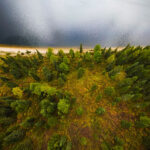 Understanding the Causes of Spider Web-Like Growths in Succulents
Understanding the Causes of Spider Web-Like Growths in SucculentsIf you notice your succulent's leaves turning blue, it's a good idea to assess its light exposure and make adjustments accordingly. By providing adequate sunlight and proper care, you can help your succulent regain its vibrant, healthy color.
Nutrient deficiencies, particularly magnesium deficiency, can manifest as blue discoloration in succulent leaves due to the plant's inability to produce chlorophyll effectively
When succulent leaves take on a blue hue, it can be a sign of nutrient deficiencies, particularly magnesium deficiency. Magnesium is an essential nutrient for plants, as it plays a crucial role in the production of chlorophyll. Chlorophyll is responsible for the green color in plant leaves, and its deficiency can lead to unusual discoloration.
In succulents, magnesium deficiency can result in a blue tint on the leaves. This occurs because without sufficient magnesium, the plant cannot synthesize chlorophyll effectively. As a result, the leaves may appear pale green or even blue.
To identify whether the blue discoloration is caused by magnesium deficiency, it is important to check for other symptoms. Along with the blue tint, succulents with magnesium deficiency may exhibit yellowing or browning of the leaf edges. The leaves may also become brittle and show signs of stunted growth.
To address magnesium deficiency in succulents, it is advisable to provide the plants with a magnesium-rich fertilizer. This will help replenish the nutrient levels in the soil and promote healthy chlorophyll production. Additionally, adjusting the pH level of the soil can also aid in magnesium absorption by the plants.
It is worth noting that while magnesium deficiency is a common cause of blue discoloration in succulent leaves, it is not the only factor. Other nutrient deficiencies, such as iron or manganese, can also lead to similar symptoms. Therefore, it is essential to assess the overall health of the plant and consider all possible causes before addressing the issue.
Pests or diseases such as mealybugs or fungal infections can cause blue discoloration in succulent leaves as they damage the cells and disrupt normal pigmentation
When it comes to blue discoloration in succulent leaves, the presence of pests or diseases should not be overlooked. Mealybugs, for instance, are known to infest succulent plants and can cause damage to the cells. As they feed on the plant tissues, they disrupt the normal pigmentation process, resulting in a blue hue on the leaves.
 Effective Solutions for Eliminating Mealy Bugs on Succulent Plants
Effective Solutions for Eliminating Mealy Bugs on Succulent PlantsFungal infections can also be a culprit behind the blue discoloration. Fungi such as powdery mildew or botrytis can infect succulent plants, leading to discoloration and damage to the cells. These infections interfere with the production of pigments in the leaves, causing them to appear blue.
It's important to keep a close eye on your succulents and regularly inspect them for any signs of pests or diseases. Early detection and treatment can prevent further damage and help restore the natural color of the leaves.
Here are some common signs of pest or disease infestation:
- Presence of mealybugs or other pests on the leaves or soil
- Visible damage to the leaves, such as holes or chew marks
- Sticky residue on the leaves, indicating the presence of pests like aphids
- White or gray powdery coating on the leaves, a sign of fungal infection
- Wilting or drooping of the leaves, indicating a possible disease
If you notice any of these signs, it's crucial to take immediate action to address the issue. Treating pest infestations may involve using natural remedies such as neem oil or introducing beneficial insects like ladybugs to control populations. Fungal infections, on the other hand, may require the use of antifungal treatments or adjusting environmental conditions to discourage their growth.
Remember, prevention is key when it comes to maintaining healthy succulent plants. Providing them with proper care, including appropriate watering, adequate sunlight, and well-draining soil, can go a long way in reducing the risk of pests or diseases that may cause blue discoloration in the leaves.
Blue discoloration in succulent leaves can be a result of pests like mealybugs or fungal infections. Regular monitoring and prompt action can help prevent and treat these issues, ensuring your succulents thrive with their natural vibrant colors.
Cold temperatures can lead to blue discoloration in succulent leaves as it can cause stress and affect the plant's metabolic processes
Cold temperatures:
Cold temperatures can lead to blue discoloration in succulent leaves as it can cause stress and affect the plant's metabolic processes. When succulents are exposed to extremely low temperatures, their growth and development can be disrupted, resulting in changes in leaf color.
 Understanding the Factors behind Succulent Death Blooms
Understanding the Factors behind Succulent Death BloomsDuring cold weather, succulents may experience frost damage, which occurs when ice crystals form on the surface of the leaves. This can cause cell membranes to rupture, leading to the release of pigments that give the leaves a blue hue.
Additionally, cold temperatures can inhibit the normal functioning of chloroplasts, the plant organelles responsible for photosynthesis. This disruption in photosynthesis can alter the production and distribution of pigments, leading to blue discoloration in the leaves.
It's important to note that not all succulents will exhibit blue discoloration in response to cold temperatures. Some species have natural adaptations that allow them to tolerate and even thrive in colder climates, while others may be more sensitive to temperature changes.
To prevent blue discoloration caused by cold temperatures, it is advisable to provide adequate protection for your succulents during winter months. This can be done by moving them indoors or placing them in a greenhouse or other sheltered area where they can be shielded from extreme cold.
Overall, while cold temperatures can induce blue discoloration in succulent leaves, it is important to consider other factors such as species-specific adaptations and overall plant health when evaluating the cause of leaf color changes.
Genetic factors can also contribute to blue discoloration in succulent leaves, as some succulent species naturally exhibit blue pigmentation in their leaves
Genetic factors play a significant role in the blue discoloration of succulent leaves. Certain succulent species have naturally evolved to exhibit a stunning blue pigmentation in their leaves. This unique characteristic is a result of specific genetic traits that determine the production of pigments responsible for the blue coloration.
One such example is the Echeveria glauca, commonly known as the Blue Echeveria. This succulent species has a genetic makeup that promotes the synthesis of anthocyanins, a group of pigments responsible for the blue coloration. Anthocyanins are water-soluble pigments that are commonly found in flowers and fruits, but in some succulents, they are also present in the leaves.
The blue coloration in succulent leaves can be attributed to the unique ability of anthocyanins to selectively absorb and reflect certain wavelengths of light. The molecular structure of anthocyanins allows them to absorb light in the orange, yellow, and green spectrums, while reflecting light in the blue spectrum. This selective absorption and reflection of light result in the characteristic blue coloration of the leaves.
The presence of these genetic factors does not mean that all individuals of a succulent species will have blue leaves. Environmental conditions also play a crucial role in the expression of these blue pigments. Factors such as light intensity, temperature, and nutrient availability can influence the production and accumulation of anthocyanins in the leaves.
In addition to genetic factors, certain stressors can also induce blue discoloration in succulent leaves. When succulents are exposed to extreme temperatures, drought, or high levels of light intensity, they may undergo physiological changes that lead to the production of anthocyanins. These stress-induced pigments can cause leaves to turn blue as a protective mechanism against damage caused by excessive light or heat.
The blue discoloration in succulent leaves can be attributed to a combination of genetic factors and environmental conditions. Some succulent species possess specific genetic traits that promote the production of blue pigments, while environmental factors such as light, temperature, and stress can influence the expression of these pigments. Understanding the causes of blue discoloration in succulent leaves adds to our appreciation of the diversity and beauty found in these unique plants.
Frequently Asked Questions
1. What causes blue discoloration in succulent leaves?
The blue discoloration in succulent leaves is often caused by a pigment called anthocyanin, which is produced in response to stress or environmental conditions.
2. Is the blue color in succulent leaves harmful to the plant?
No, the blue color in succulent leaves is not usually harmful to the plant. In fact, it can be a natural defense mechanism that helps protect the plant from excessive sunlight or extreme temperatures.
3. Can I prevent or remove the blue discoloration in succulent leaves?
Preventing or removing the blue discoloration in succulent leaves is challenging because it is a natural response to environmental factors. However, providing optimal growing conditions and avoiding excessive stress can help minimize the discoloration.
4. Are all succulents prone to developing blue leaves?
No, not all succulents are prone to developing blue leaves. The presence of anthocyanin and the resulting blue color can vary depending on the species and individual plant genetics.
If you want to read more articles similar to Causes of Blue Discoloration in Succulent Leaves, you can visit the Pests and Diseases category.

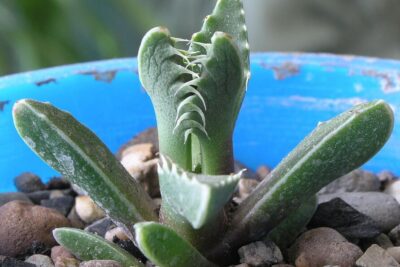

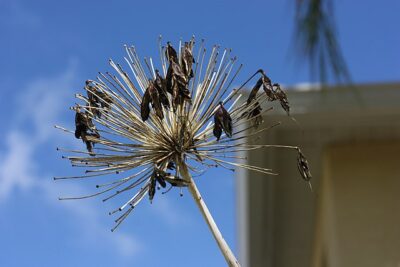

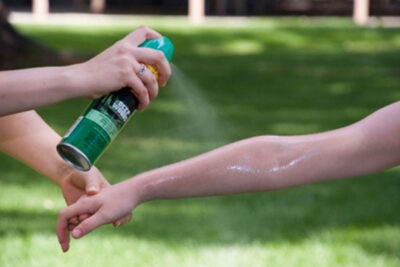
You Must Read